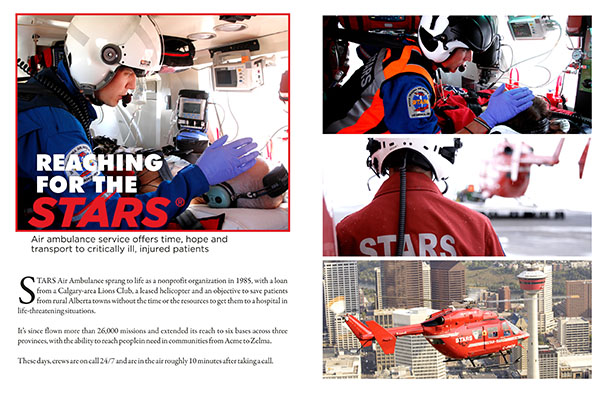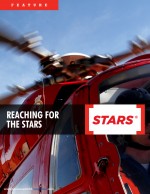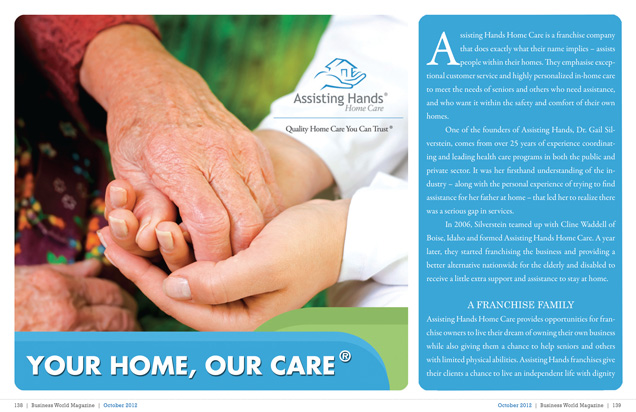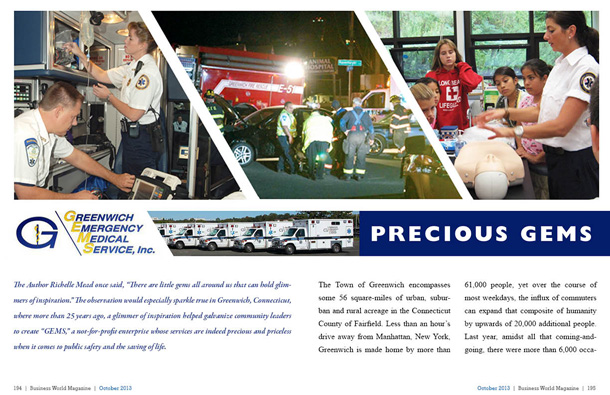
Reaching for the STARS
Air ambulance service offers time, hope and transport to critically ill, injured patients

STARS Air Ambulance sprang to life as a nonprofit organization in 1985, with a loan from a Calgary-area Lions Club, a leased helicopter and an objective to save patients from rural Alberta towns without the time or the resources to get them to a hospital in life-threatening situations.
It’s since flown more than 26,000 missions and extended its reach to six bases across three provinces, with the ability to reach peoplein need in communities from Acme to Zelma.
 These days, crews are on call 24/7 and are in the air roughly 10 minutes after taking a call.
But it’s not simply about speed. Joined together with the quick response is demonstrated medical acumen, which takes the form of a team that includesflight paramedics,nurses with critical-care skillsand transport physicians. Many of the paramedics and nurses hold positions with emergency medical services or hospital critical-care departments. The physicians provide medical oversight on all missions and are on-board for 10 percent of patient transports.
STARS helicopters also transport pediatric intensive care unit (PICU) teams for patients younger than 17 years and neonatal intensive care unit teams (NICU) for newborn patients younger than 28 days. One member of the STARS medical air crew assists the specialty teams as needed during those missions.
It was the first helicopter EMS operation in Canada to stock blood at bases to allow transfusions without stopping at a hospital, and it was the first civilian organization to use night-vision goggles – maintaining an extensive program to make them available to all pilots across six bases. Yet another program has implemented the use of video laryngoscopes, and on-board ultrasound has become standard practice.
An internal review is undertaken on all medical cases – a practice the president of the Canadian Medical Association called the “gold example for how everything should be done” – and STARS has been accredited as a member of the Commission on Accreditation of Medical Transport Systems since 1998, with its most recent audit completed in 2013.
Further validation came last October, when a two-person STARS team placed first at the 12th edition of the CAE Cup in Virginia Beach, Va., where teams competed in a test of real-time, real-situation performance on state-of-the-art patient simulators at the annual Air Medical Transport Conference. STARS has finished third or better in each year it’s participated in the event.
“We are very, very proud of what do here,†CEO/President Andrea Robertson said. “We also see it as a huge responsibility and a privilege to be involved with individuals on what’s probably the toughest day of their lives.â€
It was one of those difficult days – when a young mother died in an over-the-ground ambulance en route to a Calgary hospital – that inspired STARS founder Dr. Gregory Powell to turn the knowledge that he’d gained into the service that patients in Alberta, Saskatchewan and Manitoba rely on today.
“She had a difficult birth, not a terribly abnormal birth – after all, the baby was born normal and healthy – but she bled to death in the ambulance on the way into Calgary,†he said.“It was just speed. They ran out of blood. They ran out of fluids. They were coming from a small, little hospital. And it just sort of struck you that this was a completely unnecessary situation, and we can do something about this.â€
Within weeks, Powell assembled a group of emergency doctors who leased a helicopter and staffed it with a volunteer medical crew. He said they coupled the obvious adventure element with a growing realization that the concept could have a significant impact on pre-hospital patient care.
“It worked pretty well,†he said, “but we didn’t have any money and resistance to funding by government was understandable. They were trying to, even back then, stretch budgets to cover growing medicals costs which were not in their sights. So we had a pretty difficult time with funding and decided maybe we ought to raise some money.â€
As it turns out, many donors have answered the call.
The Mosaic Company, a Saskatchewan-based producer of phosphates and potash for the agricultural industry, donated $5.5 million to help fund the 2012 purchase of a BK117 helicopter and construction of a hangar from which STARS now operates in the provincial capital of Regina.
“Safety is an important part of our corporate culture,†said Shea Haverstock, Mosaic’s public affairs manager. “By continuing to support instrumental programs like STARS, we are committed to enhancing the quality of life for our employees and the communities in which they live.â€
Additionally, STARS has run a fundraising lottery in Alberta for the last 21 years and is the only program of its kind to have sold out in each. Another innovative appeal, CEO Rescue in the Rockies, set an organizational record for the largest dollar amount raised in one day – $1.3 million.
“It’s a unique model for success that we’ve put together here in Western Canada,†said Ron Dufresne, STARS’ vice president of Saskatchewan operations. “We’ve been very fortunate that we have a compelling story to tell, and a long track record of performance and impacting lives in communities. Put the two together and it’s a natural that people want to be a part of it.â€
 And for the people it serves, it becomes a part of them as well, as Powell recalled from an interaction during an early fundraising visit to a small Alberta town near the Saskatchewan border.
“It wasn’t about me,†he said.“It was about somebody who cared.
“It was about increasing the ambiance and the safety of living in a remote community like that. The guy next to me – an elderly man with gnarled hands, who’d obviously been a man of the farm and the countryside his whole life – hunched over and he put his hand over his heart. And he said, ‘you know, doc, out here when you have the big one, you mostly die. Now that you’re here, we’ve got a chance. And that’s all we were looking for, a chance.â€
It’s a moment that still registers three decades later – after Powell has stepped down from full-time STARSleadership into a part-time role as a community ambassador.
“We go there five times a year,†he said. “It wasn’t like we were going to epidemiologically change the survival statistics of the world from this little town. But the gesture was very enlightening to me and I think my headlights came on at that time and I said, ‘My goodness, this is going to work.’â€
Â
AT A GLANCE
WHO: STARS
WHAT: Emergency helicopter service to transport critically ill or injured patients
WHERE: Six bases in Canada: three in Alberta, two in Saskatchewan and one in Manitoba
WEBSITE: www.Stars.ca








